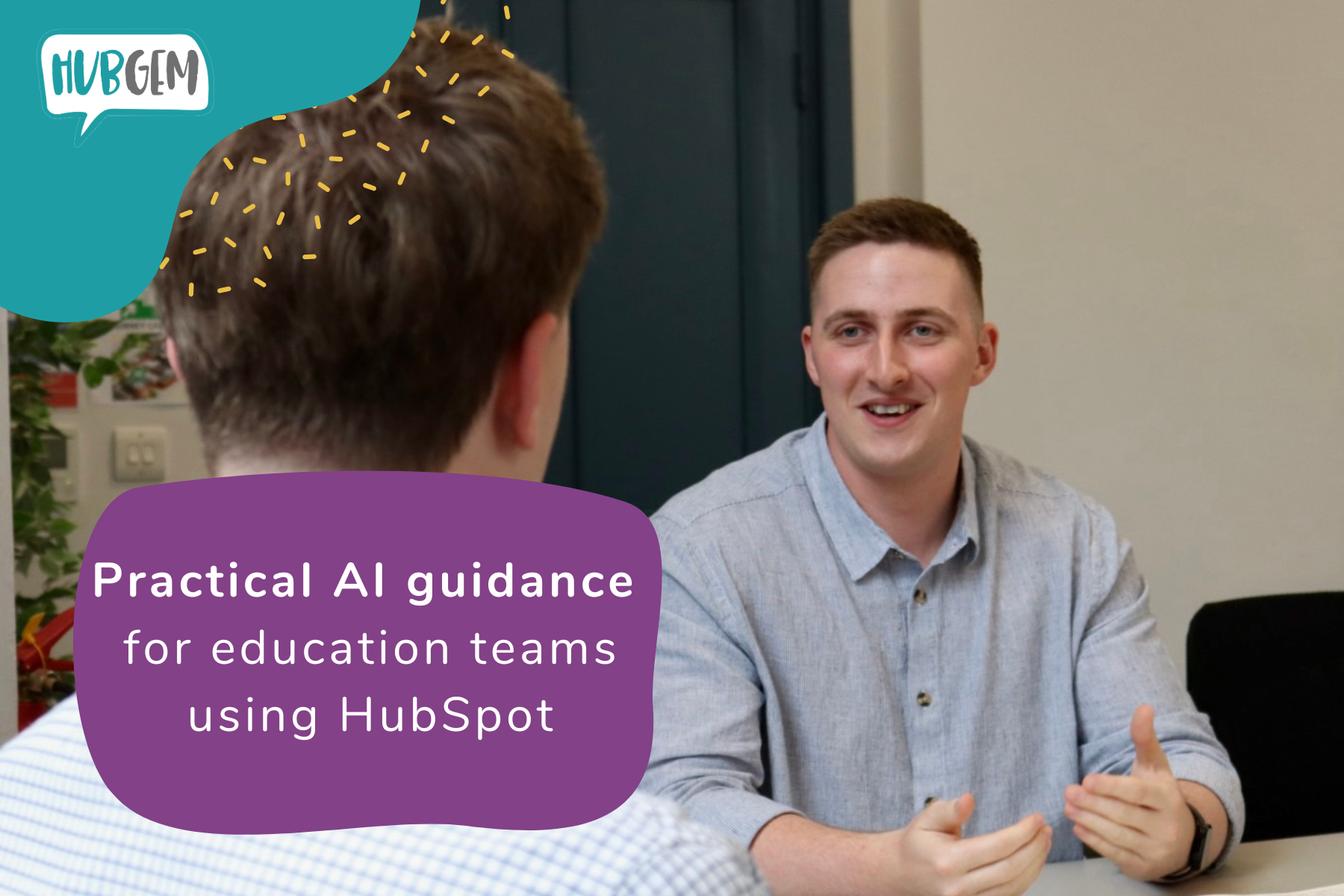Personas are a way of profiling your audience that will help you to understand how to reach and engage with them.
Buyer (or marketing) personas are fictional, generalised representations of your ideal customers. They help us to think about those that we're trying to attract, and relate to our customers as 'real people'.
Having a deep understanding of your buyer personas is critical to driving content creation, service development, follow ups, and really anything that relates to customer/student/supporter acquisition and retention.
For education providers, understanding the personas of your prospective students helps you to tailor your admissions experience to meet their specific needs and behaviours and to ensure that your are able to address their concerns. For example, if your school welcomes a large number of military families who need to rely on excellent boarding facilities for their child, then by understanding this persona you can ensure that you are meeting their needs.
Having a clear understanding of what makes your audience tick is key to your success. The strongest personas are based on market research as well as insights from your actual customer base (feedback, surveys etc).
In the same way that knowing your marketing personas can help you to attract the right people to your organisation, creating 'negative' personas can help you to identify those who are not a good fit for you.
So, how can personas be used in marketing?
At the most basic level, developing personas allows you to create content and messaging that appeals to your target audience. It also enables you to target or personalise your marketing for different segments of your audience. For example, instead of sending the same lead nurturing emails to everyone in your database, you can segment by buyer persona and tailor your messaging according to what you know about those different personas.
And if you take the time to also create negative personas, you’ll have the added advantage of being able to segment out the “bad apples” from the rest of your contacts, which can help you achieve a lower cost-per-lead and cost-per-conversion.
How to create a buyer persona
Audience research
Your personas should be based on measurable information, not gut instinct. So the process must start with in-depth research. Learn who is already a customer/supporter/student of your organisation and collect data on key demographics like age, income, location, interests and life stage. You can use customer surveys or you may already have this data in your CRM. Using web and social analytics tools will allow you to see who is interacting with your brand online (even if they are not yet customers).
Once you have gathered your audience insights, it is a good idea to take a look at your competitors or other similar organisations to see if you are missing any key target groups. You can do some keyword research by Googling search terms you want to rank highly for and seeing who comes out on top, it is also handy to see what interaction and audiences your competitors have on social media.
The Facebook Insights tool is a great place to start.
Identify pain points
Consider what problems your potential customers are trying to solve and what it is that is holding them back from success and the barriers that they are facing. Monitor social media channels for mentions of your brand, competitors, services, and keywords related to your business.
It's also a good idea to speak to your receptionists and administration teams to see what things they get asked the most. See if you can identify any patterns in the challenges that people are facing relating to your brand.
Identify goals
This is the opposite of pain points - goals and aspirations are the positive things that your potential customers/supporters/students are hoping to achieve. For non-profits and education providers, these are likely to be personal goals or those relating to family members. These goals may be directly related to the solutions you can provide but they don't have to be, it's more about getting to know your customers.
Even if your personas’ goals don’t relate specifically to your organisation's offering, they can form the basis of a campaign, or they might simply inform the tone or approach you take in your marketing.
Social media monitoring and listening can be a good way to gather this information, too. And just as your customer service team was a good source of insight for pain points, they can be a good source of insight on customer goals.
Understand how your organisation can help
Now that you understand your customers’ pain points and goals, it’s time to create a clear picture of how your organisation can help. As part of this step, you’ll need to stop thinking about your brand in terms of features and services, and instead dig deep into the benefits you offer to supporters and students.
It can be hard to get out of the features and services mindset—which is one reason buyer personas are so important. They help you flip your thinking and consider your services from a buyer’s point of view - how it can make your supporter/student's life better.
Turn your research into personas
Start looking for common characteristics from your research. As you group those characteristics together, you’ll have the basis of your unique customer personas.
In practice, as an example, you may have identified a core group of women in their 40s who live in a rural location near your school, who are wealthy, enjoy social events and are happy for their child to travel long distances to get to school as long as it is the best school for their individual needs.
Or perhaps, you have identified a number of men in your research who are retired and wanting to spend their time doing something worthwhile, they can't travel far but have a wide skill set that would perhaps benefit your non-profit organisation with fundraising events.
Once you have these insights it's time to turn them into personas that you can identify with and speak to.
Give your persona a name, a job title, a home, and other defining characteristics. You want your persona to seem like a real person without getting too specific and excluding characteristics that should rightly be considered part of this customer group.
Aim for about the amount of information you would expect to see on a dating site, or what you might learn from a short conversation on an airplane or at a bus stop. Don’t forget to include pain points and goals.
Here are some personas based on the examples above:
Social Sally
- 45 years old
- Lives in a village in rural England
- Works in the family business which is run by her husband
- Has 2 children, primary age but soon to be looking at senior schools
- Has a large social circle and they enjoy regular dinners and events
- Wealthy and enjoys a busy lifestyle with lots of family holidays
and so on...
Retired Robert
- 70 years old
- Active and enjoys long walks with his wife and their dog
- Lives on the outskirts of a small town
- Recently retired from a busy career managing a chain of shops
- Has many years of experience working with people
- Enjoys being around people and is very sociable
- Has lots of free time
and so on...
Remember, a list of characteristics does not equal a persona. A persona is realistic description of a person who represents one segment of your customer base. Of course, not all people in this customer group match the characteristics of your persona exactly. But this persona represents this customer group to you and allows you to think about them in a human way rather than as a collection of data points.
Use your personas to plan your marketing efforts
Once you have a clear picture of the personas you are hoping to target, use your insight and generalisations on their pain points and goals to plan your marketing and content strategies.
Consider how you can provide value to them with your content, provide at least 5 pieces of content based on how you can help with your persona's pain points or goals.
Think about your buyer personas every time you make a decision about your business and your marketing strategy. Provide content and services those personas will value and you’ll build a bond with the real customers they represent, boosting sales while creating brand loyalty and trust.
Considering ways to improve your digital marketing efforts? There are lots more helpful articles on our blog, subscribe now.

|
What next?Use your marketing personas to plan your content. Download our free Education Buyer's Journey Worksheets to plan your content for the year ahead. |
.png?width=150&height=101&name=HUBGEM%20Logo%20-%20smaller%20logo%20(1000%20x%20673).png)



.png)



%20-%20Funnel%20reporting%20and%20feedback%20loops.png)